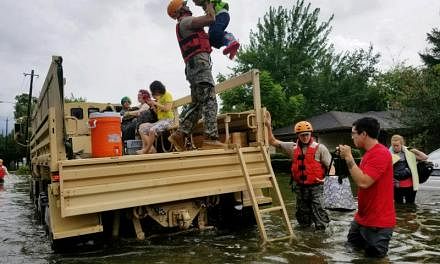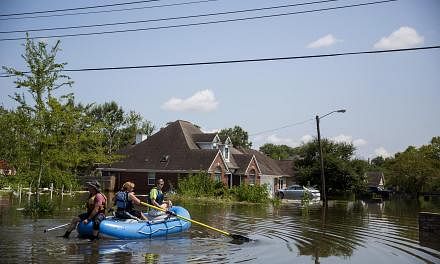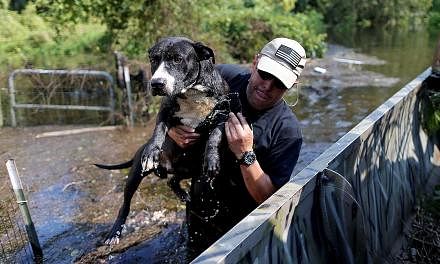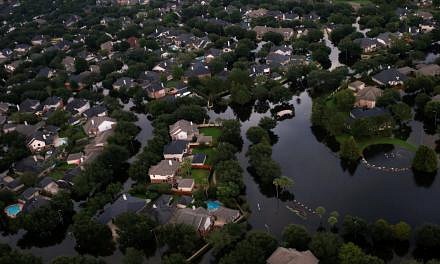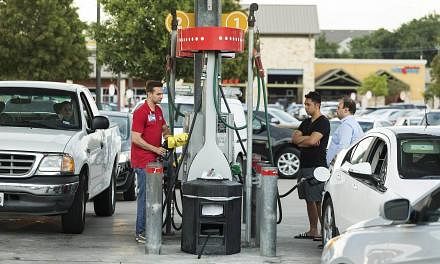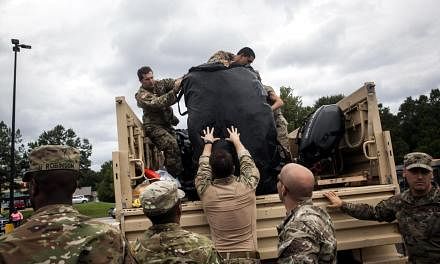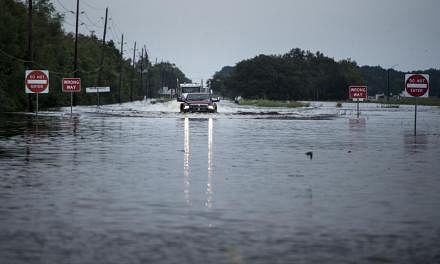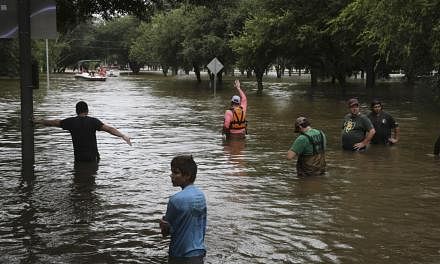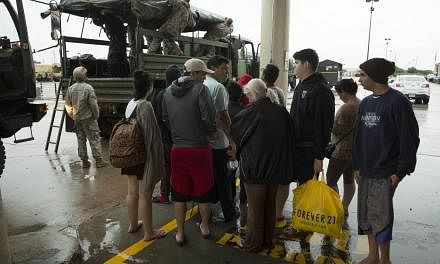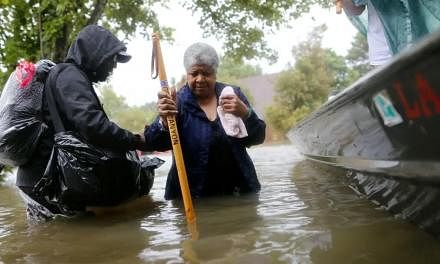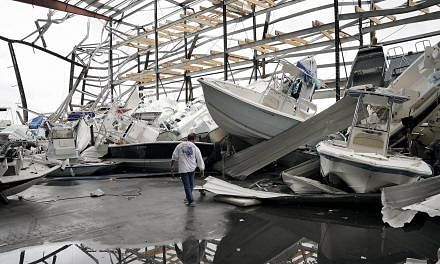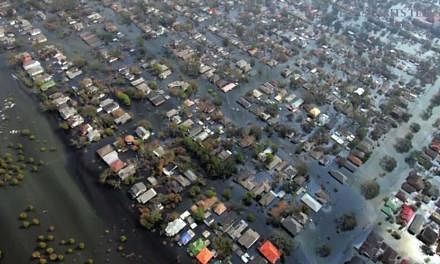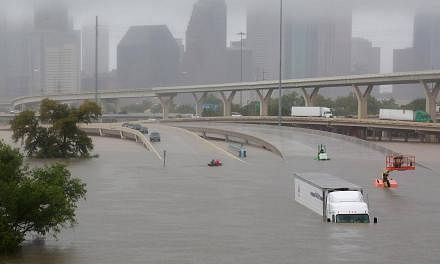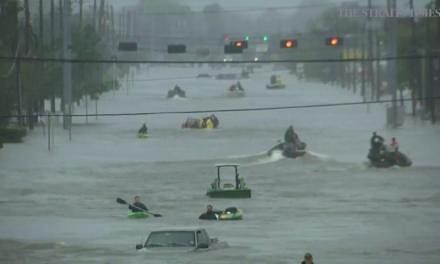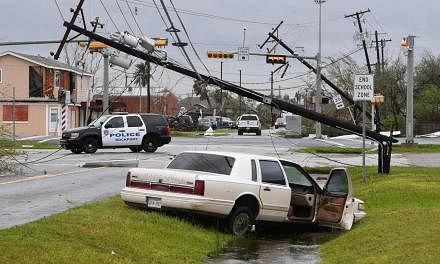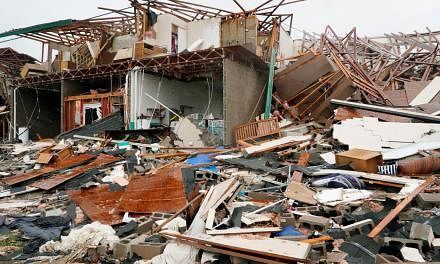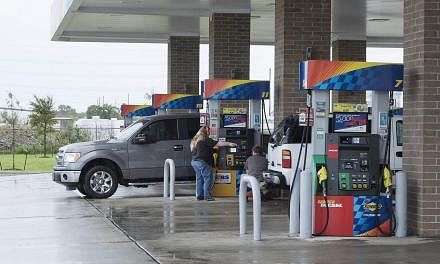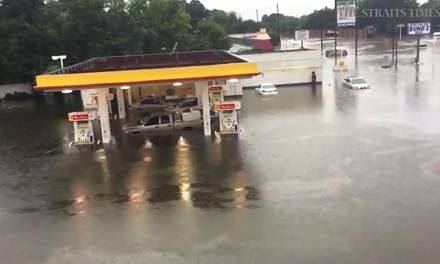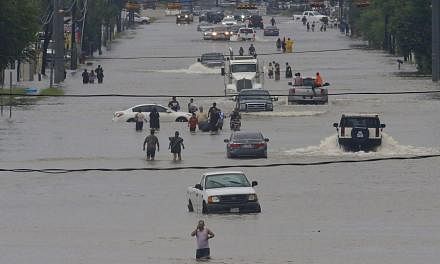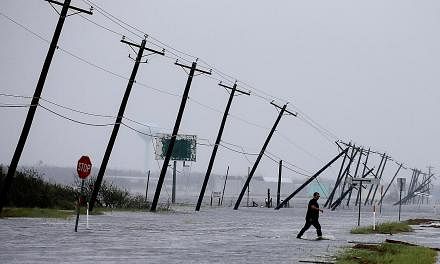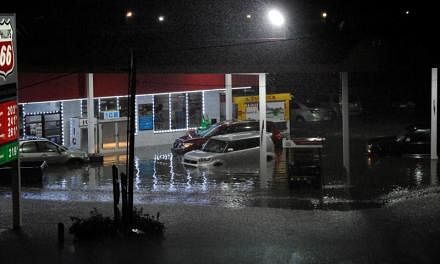NEW YORK (NYTimes) - Hurricane Harvey may inflict as much as US$30 billion (S$40.6 billion) in damage on home owners, according to preliminary estimates. But only 40 per cent of that total may be covered by insurance - and of that, the federal government will bear the biggest liability.
Private home owners' policies generally cover wind damage and, in certain cases, water damage from storm surges. But for almost half a century, all other home owners' flood coverage has been underwritten by the National Flood Insurance Programme, a federal programme that itself faces financial uncertainty.
Flooding has dealt the hurricane's biggest blow. And in areas where it is prudent - or even obligatory - to buy it, having flood coverage is the exception rather than the norm.
Home owners in areas designated as 100-year flood zones are required to hold policies from the federal programme. But in practice, the requirement is difficult to enforce and most people - including in eastern Texas - fail to buy coverage or let their policies lapse by not keeping up on the premiums.
"It's a pretty cheap buy," said Charles C. Watson Jr, a founder of Enki Holdings, a data analytics firm for natural disasters, who offered the US$30 billion estimate for the overall damage to homes. CoreLogic, a firm that analyses real estate and insurance data, estimated that private insurance would wind up covering from US$1.5 billion to US$3 billion.
Watson, who lives in what he believes to be a flood-prone area of South Carolina, said only he and a couple of his neighbours had flood coverage, even though the premiums are far lower than the cost of potential claims.
The Federal Emergency Management Agency (Fema) issues maps showing 100-year floodplains, and bases flood insurance rates on those. The maps provide good data on where storm surges may hit, or rivers may overflow their banks, said Carolyn Kousky, director of policy research at the Wharton School's Risk Management and Decision Processes Centre.
"But what they don't handle well is when a downpour overwhelms a local stormwater drainage system," she said. That is what is now happening in the Houston area, "on a scale that's never been seen before", she said.
That means many home owners with water now up to their knees, or higher, were never required to buy flood insurance, because their property was not listed as being on a 100-year floodplain.
Harris County, which includes Houston, started using new floodplain maps from Fema in January. The maps added about 8,000 parcels to the agency's Special Flood Hazard Areas, meaning those properties have a better than a 1-in-4 chance of flooding at some point during a 30-year mortgage.
Local authorities in Houston worked with Fema to get the word out about the need for flood insurance, but it was a hard sell. And now that there is a flood, it is too late to buy it.
People without coverage will have to apply for grants or low-cost loans from other branches of the federal government, said Loretta Worters, a spokesman for the Insurance Information Institute. That means delays in receiving funds, if such requests are even approved.
A Fema spokesman said the agency would have National Flood Insurance Programme claims statistics for Harvey later this week.
The National Flood Insurance Programme was created in 1968, after most private insurance companies stopped writing home owners' flood coverage because they could not charge premiums high enough to cover the potentially catastrophic costs. In addition to wind and limited storm-surge damage, private insurers cover vehicles caught in flooding.
The 49-year-old programme is now run by Fema. Its coverage has caps: US$250,000 for a house and US$100,000 for its contents, and US$500,000 apiece for a business building and its contents. Larger companies can still buy flood coverage through commercial insurers.
And even though the insurance is capped, the flood programme's finances have been shaky since 2005, when it lacked the resources to pay for the record-setting claims of Hurricane Katrina, and had to borrow US$17 billion from the US Treasury.
The programme has not been able to pay back that debt - in fact, it has had to borrow even more, just to pay the interest on its existing debt, and to pay additional storm claims. It now owes the Treasury US$24.6 billion.
Hurricane Harvey will almost certainly lead to further borrowing - but the programme has only US$5.8 billion left in its existing line of credit with the Treasury.
The programme runs on five-year authorisations by Congress, the latest of which will expire on Sept 30. If Congress does not reauthorise the programme, its ability to borrow from the Treasury will be drastically reduced.
Congress has held hearings on the matter and is considering several possible remedies, including simply extending the program temporarily. Lawmakers have occasionally granted such extensions in the past.
"I think all stakeholders are in agreement that the worst thing there could be is a lapse of the program," Kousky said. Fema normally works with mortgage lenders to enforce its flood-insurance requirement, but when the program's authorisation lapses, home sales cannot close.
"It just creates havoc in the housing market," she said.
This year, there is an added complication: The flood insurance programme's expiration roughly coincides with the possibility that the Treasury itself will run up against its legal debt ceiling, something that could happen in the first two weeks of October. Federal borrowing has itself become contentious, with some debt-averse members of Congress threatening to fight any increase in the government's borrowing limit.
"We've got all this other stuff going on, and now is not the time to figure out how to reform the system," said Watson, the data analytics expert. He added that he thought the flood-insurance programme was in dire need of reform, however, calling it "the most frustrating, screwed-up system you can imagine".



